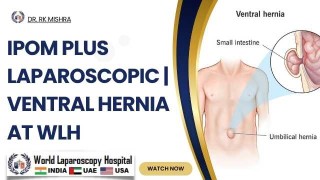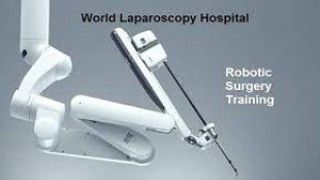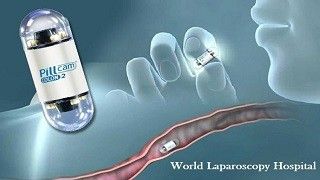Revolutionizing Umbilical Hernia Repair: Enhanced IPOM Technique with VIPRO II Mesh
Add to
Share
1,429 views
Report
2 years ago
Description
Umbilical hernias are a common medical condition that occurs when a portion of the intestine or fatty tissue protrudes through a weakened area near the belly button. In recent years, the field of hernia repair has witnessed a revolutionary advancement in the form of an enhanced technique called Intraperitoneal Onlay Mesh (IPOM) repair, utilizing the innovative VIPRO II mesh. The IPOM technique involves the placement of a mesh implant inside the peritoneal cavity to reinforce the weakened abdominal wall and provide long-lasting support. This minimally invasive approach offers numerous advantages over traditional open surgery, including reduced post-operative pain, faster recovery times, and minimal scarring. The VIPRO II mesh, specifically designed for IPOM umbilical hernia repair, brings a new level of innovation and effectiveness to the procedure. It is constructed from biocompatible materials with a unique three-dimensional structure, providing excellent strength, flexibility, and tissue integration. The mesh's porous design allows for optimal tissue ingrowth, promoting a secure and durable repair. One of the key benefits of the VIPRO II mesh is its ability to conform to the abdominal contours, ensuring a precise fit and uniform distribution of forces. This personalized fit reduces the risk of mesh migration or complications, while providing enhanced support to the weakened abdominal wall. The mesh's bioresorbable components gradually dissolve over time, leaving behind a stable and natural repair. Furthermore, the VIPRO II mesh exhibits exceptional biocompatibility, minimizing the risk of adverse reactions or complications. Its unique surface characteristics discourage the formation of adhesions, reducing the likelihood of post-operative complications such as bowel obstruction. This feature enhances patient comfort and contributes to improved surgical outcomes. The IPOM technique with VIPRO II mesh offers several advantages to both patients and surgeons. For patients, the minimally invasive approach means smaller incisions, reduced pain, shorter hospital stays, and faster recovery times compared to traditional open surgery. The aesthetic benefits of minimal scarring further enhance patient satisfaction and quality of life. For surgeons, the IPOM technique with VIPRO II mesh provides increased precision and ease of placement. The mesh's handling properties and conformability allow for accurate positioning and secure fixation, enabling surgeons to achieve optimal outcomes with minimal procedural complications. The mesh's versatility makes it suitable for a wide range of umbilical hernia sizes and complexities. It is important to note that the IPOM technique with VIPRO II mesh should be performed by experienced surgeons who are well-versed in laparoscopic hernia repair techniques. Proper patient selection, meticulous surgical technique, and adherence to best practices are essential to ensure successful outcomes and minimize the risk of complications. The IPOM (Intraperitoneal Onlay Mesh) technique combined with VIPRO II mesh has transformed the landscape of umbilical hernia repair. This groundbreaking approach involves placing a specialized mesh implant inside the peritoneal cavity to reinforce the weakened abdominal wall and achieve long-lasting support. The VIPRO II mesh, designed specifically for IPOM umbilical hernia repair, introduces a new level of innovation with its unique three-dimensional structure, exceptional biocompatibility, and personalized fit. By utilizing the IPOM technique, surgeons can perform minimally invasive procedures with smaller incisions, reduced post-operative pain, shorter hospital stays, and faster recovery times. The VIPRO II mesh, renowned for its strength, flexibility, and tissue integration capabilities, ensures a secure and durable repair. Its porous design promotes optimal tissue ingrowth while minimizing the risk of complications such as mesh migration or adhesion formation. The IPOM technique with VIPRO II mesh offers benefits to both patients and surgeons. Patients experience improved outcomes, including enhanced comfort, aesthetic results with minimal scarring, and a quicker return to daily activities. Surgeons benefit from the mesh's handling properties and conformability, enabling precise positioning and secure fixation during the procedure. It is crucial that the IPOM technique with VIPRO II mesh is performed by skilled surgeons well-versed in laparoscopic hernia repair techniques. Proper patient selection, meticulous surgical technique, and adherence to best practices are paramount to ensure successful outcomes and minimize the risk of complications. In summary, the combination of the IPOM technique and VIPRO II mesh represents a significant advancement in umbilical hernia repair. This innovative approach offers patients a minimally invasive solution with exceptional outcomes, while surgeons benefit from enhanced precision and ease of placement. The IPOM technique with VIPRO II mesh sets a new standard in umbilical hernia repair, showcasing the continuous pursuit of excellence in surgical care.
Similar Videos






